SES 14
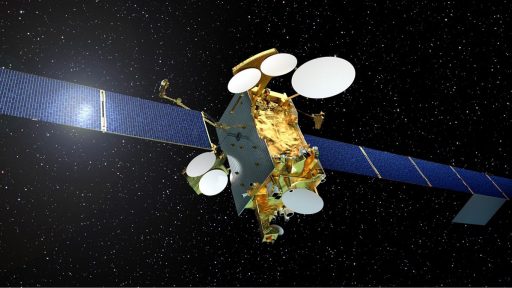
SES 14 is a commercial communications satellite operated by Luxembourg-based telecommunications provider SES as part of its America & Atlantic fleet and it is the host of NASA’s GOLD instrument aiming to provide a critical understanding of Sun-Earth connections needed for improved insight into space weather phenomena. The satellite is the second spacecraft to employ the innovative Eurostar-3000EOR satellite platform built by Airbus Defence and Space; it is the 53rd SES satellite launched by Arianespace in a very successful business relationship of over three decades.
The GOLD instrument is expected to operate for the first five years of the satellite’s on-station life, collecting a global picture of temperature and composition of the ionosphere and thermosphere every thirty minutes as the first comprehensive measurement of spatial and temporal phenomena in this vital atmospheric region where solar influx and Earth’s atmosphere meet. A detailed description of the GOLD instrument is available below.
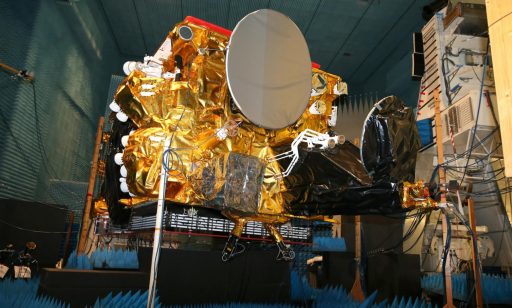
The primary mission of SES 14 is part of the SES Americas fleet, delivering Direct-To-Home Television distribution, cable broadcasting services, aeronautical and maritime connectivity over North America and the Atlantic, broadband Internet services, and cellular backhaul. SES 14 has a launch mass of 4,426 Kilograms and measures 4.0 by 5.4 by 2.7 meters in size when in its launch configuration. Taking advantage of the high-power configuration of the Eurostar all-electric satellite platform, SES 14 has an end-of-life power of 16 Kilowatts.
Outfitted with a hybrid communications payload operating in C- and Ku-Band, SES 14 will operate from an orbital position at 47.5 degrees west to deliver services to the Americas, the Caribbean, the North Atlantic corridor and Western Europe & the Mediterranean. It replaces the NSS-806 satellite launched on an Atlas-2AS rocket in 1998 and provides a vast expansion of capacity from this critical orbital location, including the addition of high-throughput capability.
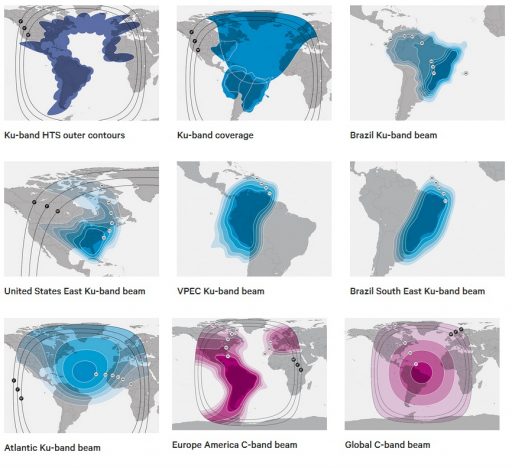
The SES 14 satellite hosts 20 Ku-Band and 28 C-Band transponders and leverages a combination of C- and Ku-Band wide-beam coverage and Ku-Band High Throughput Beams. SES 14 has a Digital Transparent Processor (DTP) for a great increase in payload flexibility with customized bandwidth solutions available to customers.
The satellite delivers a total of four Ku-Band wide-beam coverage zones: a Brazil Ku-Band beam provides coverage for the entire Brazilian territory with high-power characteristics on the eastern shore where major population centers are located; a dedicated Brazil South East Ku-Band beam provides additional capacity to the country’s population centers; a VPEC Beam delivers coverage to Venezuela, Peru, Ecuador and Columbia; a U.S. East Beam covers the entire U.S. East Coast and an Atlantic Ku-Band Beam provides services from the Central U.S. to Central Europe.
Wide-Band Ku-Band is employed for Direct-to-Home and Direct-to-Cable video distribution plus VSAT services. High-Throughput Ku-Band Coverage is available for the entirety of Latin America, the Eastern U.S. and Canada, the Atlantic Bridge, Western Europe and Western Africa for in-flight and maritime services, Internet distribution and cellular backhaul.
The satellite’s C-Band transponders deliver a Global C-Band Beam covering the majority of the Americas, including the western regions, the entire Atlantic and the majority of Europe and Africa. A Europe-and-America C-Band beam focuses high-power coverage on South America and provides medium-power capacity across Europe, including the northern regions.
GOLD Hosted Payload
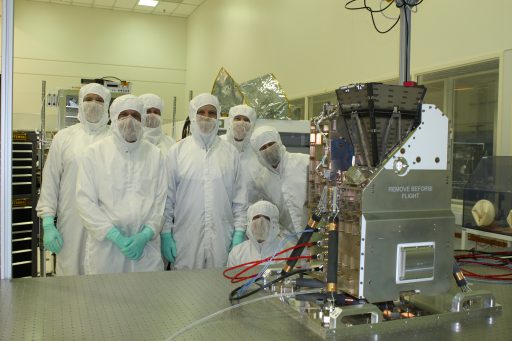
GOLD, the Global-scale Observations of the Limb and Disk Instrument, has been commissioned as a mission of opportunity under NASA’s Explorer Program that operates low-cost missions for heliophysics and astrophysics via mid-sized spacecraft and hosted payloads. The instrument is a Far Ultraviolet Imaging Spectrograph capturing a global image of Earth’s limb every thirty minutes to capture dynamic processes occurring where geospace and the solar wind meet.
GOLD is a collaboration between the Laboratory for Atmospheric and Space Physics (LASP) at the University of Colorado, the University of Central Florida, NASA’s Goddard Spaceflight Center and SES Government Solutions. UCF received the leading role in the mission in the form of a $55 million grant to bring the instrument from the drawing board to the launch pad.
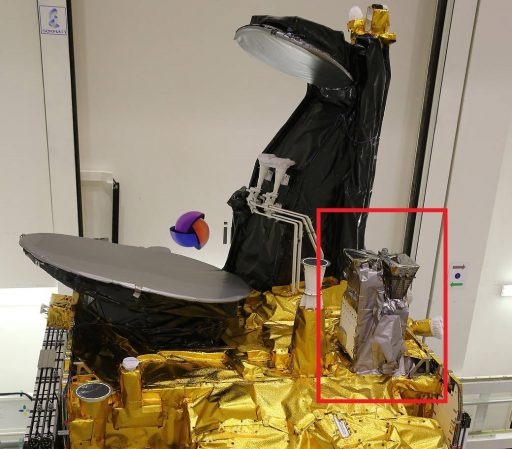
The primary objective of GOLD is providing an unprecedented ultraviolet imaging capability of the Earth’s upper atmosphere from the vantage point of Geostationary Orbit. Information provided by the instrument will further the current understanding of space weather and its impact on satellites which in turn can affect billions of people on Earth relying on satellite services for communications, entertainment, financial services and navigation.
Under the GOLD project, UCF oversees the program and is responsible for the data center that collects, processes, archives and distributes the science data collected by the mission. LASP provides the overall project management, system engineering, instrument operations and Education/Public Outreach. GOLD is the first NASA science mission flying as a hosted payload on a commercial communications satellite, exploring a new, cost-effective option of flying a science-class mission on a commercial satellite.
As a hosted payload, GOLD dips into resource margins available in the early years of the commercial satellite’s operation (i.e. solar array output is greater at beginning of life vs. end of life) and also takes advantage of the satellite’s stabilization system for stable pointing and its communications system for downlink of data. Operation of the GOLD payload is foreseen for the first five years of SES 14’s on-station life.
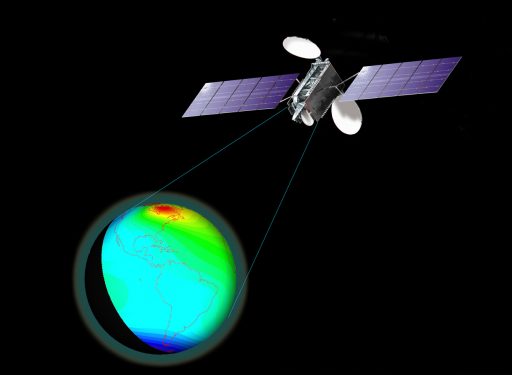
One challenge overcome by GOLD was the fact that commercial satellites are subject to a much faster procurement cycle (24 to 36 months) than instrument development, assembly and integration on a science-class mission. This was solved by SES providing specified instrument interfaces and requirements to the instrument with a host satellite chosen late in the instrument’s development flow. GOLD was shipped for integration with SES 14 in January 2017 and integration steps were complete by the second half of May, allowing the assembled satellite to enter pre-launch environmental testing.
Four core questions will be answered by GOLD: 1) how does geomagnetic activity influence the temperature and composition of the thermosphere up to 600km in altitude, 2) how does the global-scale thermosphere respond to extreme ultraviolet variability by the sun, 3) how significant are the effects of atmospheric waves and tides (forcing from below) on thermospheric temperature and composition, 4) how does the nighttime equatorial ionosphere influence the formation and evolution of plasma density irregularities? One major driver of GOLD is the need for the separation of spatial and temporal variations in the Thermosphere-Ionosphere coupling which can not be measured via in-situ missions or ground-based instruments.
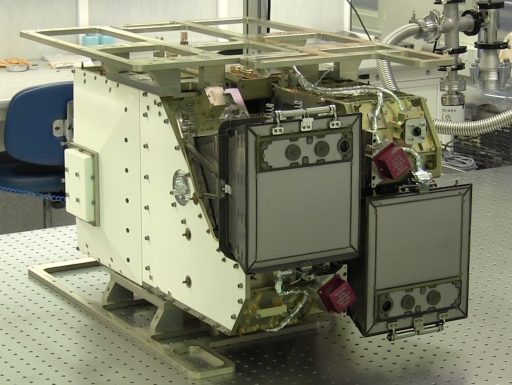
The GOLD instrument package is 40 by 30 by 70 centimeters in physical dimensions, weighs 37 Kilograms, requires an average power of 72 Watts and creates science data at a rate of 6 Mbit/s. GOLD is a Far Ultraviolet Spectrograph with two identical channels, capturing imagery in the FUV wavelength range of 132 to 162 nanometers at a cadence of 30 minutes which will provide the first comprehensive picture of spatial and temporal dynamics ongoing in the Ionosphere/Thermosphere.
The two telescopes hosted by the instrument are identical, featuring 30 by 30-millimeter entrance pupils and a 150-millimeter focal-length telescope feeding light into a grating spectrometer. GOLD’s two imagers are fully independent and controlled by a common processor assembly which also builds the only data interface with the host spacecraft, sending science and housekeeping data to a dedicated transponder that transmits it to an SES ground station where data is temporarily stored until LASP confirms good data reception. Instrument data is then relayed to the University of Central Florida via terrestrial network for processing, archiving and dissemination to the scientific community.
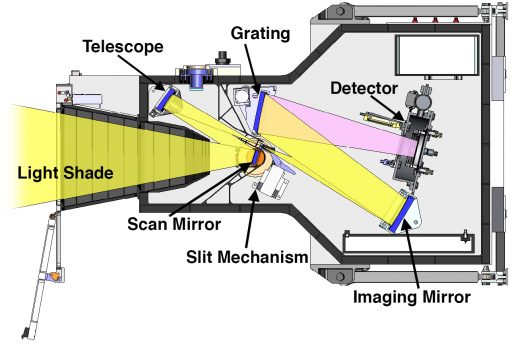
Each of the GOLD instrument channels comprises its own ultraviolet spectrograph equipped with an imaging detector sensitive at 132 to 162 nm – a wavelength range chosen since it contains the most important UV emissions from the primary thermospheric constituents: atomic oxygen with a prominent spectral signature at 135.6 nanometers and molecular nitrogen, detectable through the Lyman-Birge-Hopfield (LBH) band system stretching from 132 to 162 nm.
Light enters the telescope through a light shade to eliminate diffuse sunlight reflected from Earth and falls onto a plane scan mirror that images the spectrograph entrance slit onto the atmosphere. The scan mirror is responsible for sweeping out the limb of Earth via +/-100 degrees of east-to-west motion and tilting by 4.5 degrees to switch between the northern and southern hemispheres. The scan mirror directs light into the single-mirror telescope which then relays it to the slit mechanism from where it enters the spectrograph which uses an imaging mirror as a relay, directing radiation to the grating which reflects the dispersed light to the detector assembly.
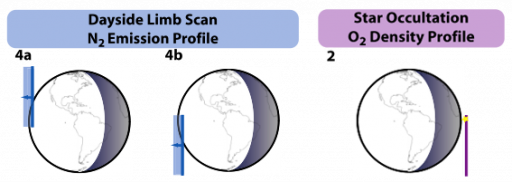
The GOLD Detector is an open-faced microchannel plate detector outfitted with an opaque CsI photocathode and a cross-delay line anode. The detector is 27 by 32 mm in physical dimensions and host 1600 x 1800 pixels.
GOLD’s Slit Mechanism hosts three different slits that can be placed into the optical path: two slits 0.2 and 0.4 millimeters wide are employed for regular measurements to obtain spectral resolutions of 0.2 and 0.35 nanometers, required for measuring temperature and constituent composition; a third slit with a diameter of 2.6 millimeters is employed for stellar occultation measurements with a corresponding spectral resolution of 2.2 nanometers. The three slits set the imager field of view to 0.05, 0.15 and 0.95 degrees in width with a fixed length of 10 degrees.
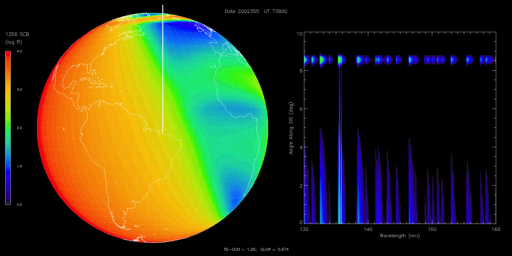
In Stellar Occultation mode, the Scan Mirror is positioned where the occultation is expected and then remains motionless to allow data collection while the target star drifts through the atmosphere, as seen from the instrument. This allows the absorption of starlight to be recorded for a measurement of molecular oxygen, one of the minor thermospheric constituents.
GOLD, between its two spectrographs, achieves a spatial resolution of 50 Kilometers for limb and disk imagery, delivering one full scan every 30 minutes (60 minutes if only one imager is active) for full N2, O+ densities and thermospheric temperature. Stellar occultations provide O2 profiles from the limb up. The major development of GOLD is the simultaneous measurement of composition and temperature as well as the separation of temporal and spatial phenomena.
Eurostar-3000EOR
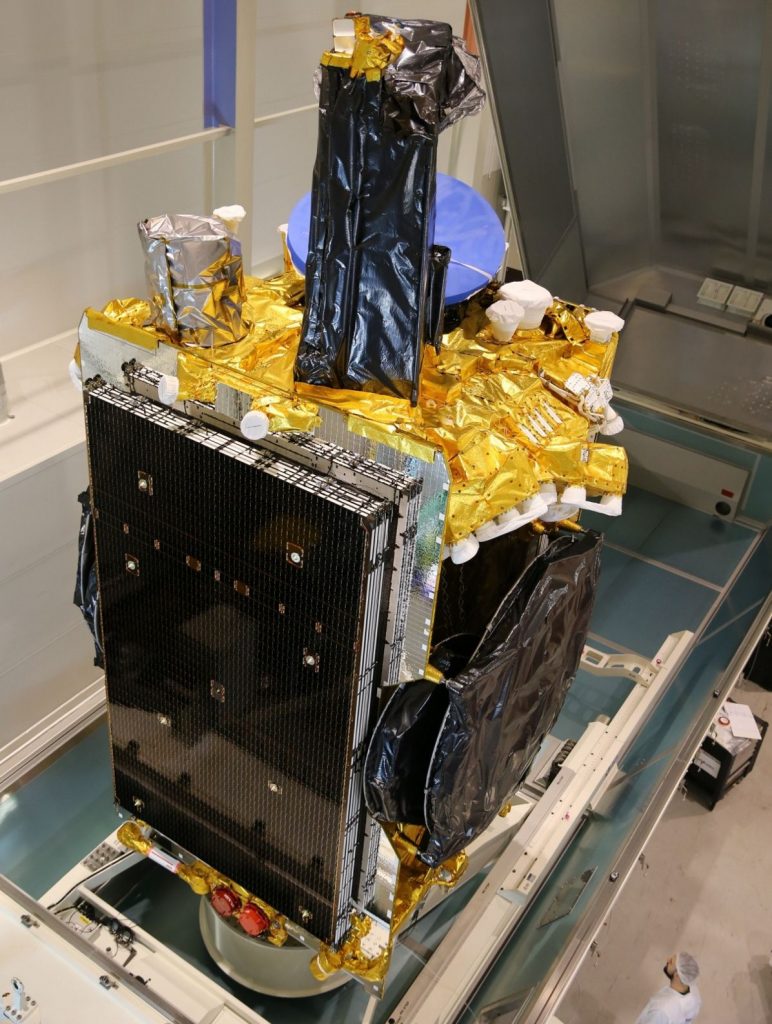
SES ordered the SES 14 satellite from Airbus Defence and Space in 2014 based on the latest evolution of the Eurostar 3000 platform known as EOR for Electric Orbit Raising, representing the second EOR satellite to take flight.
As ion propulsion matured as an operational propulsion technology, numerous satellite manufacturers incorporated ion thrusters in their satellite platforms to extend the operation lives of the spacecraft beyond what is possible with chemical propulsion alone. All-electric satellites are a relatively new trend, but provide an attractive solution given their lower launch cost plus higher mass budget available for the communications package.
Typically, Eurostar-3000 satellites weigh in around five or six metric tons and will require the upper payload slot of the Ariane 5 for the larger of the two passengers. Using an all-electric version of the platform, satellite launch mass reduces to 3.5 metric tons and allows E3000 to fly as a lower-berth passenger which comes with a smaller price tag. After its official introduction in 2014, Eurostar-3000EOR already received six orders from Inmarsat, SES, Eutelsat and the French Government.
The all-electric E3000 satellites employ the Safran/Snecma PPS5000 electric propulsion unit for all propulsive tasks – orbit raising, fine-tuning and regular stationkeeping maneuvers. Development of the EOR platform was completed by Airbus Defence and Space in collaboration with ESA and CNES to create a competitive platform for the commercial market where Boeing dominated in the area of all-electric satellites.
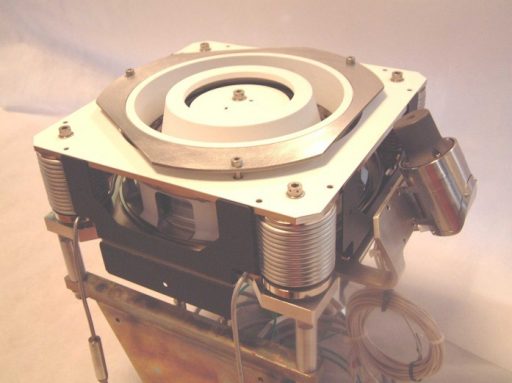
Electric propulsion has the major advantage of being much more efficient than traditional chemical propulsion in terms of specific impulse, meaning the satellite requires less propellant mass to achieve a target change in velocity. However, ion thrusters only deliver a fraction of the thrust of chemical rockets and all-electric satellites need much longer to reach their orbital destination, creating a trade-off.
Stationkeeping in Geostationary Orbit is necessary due to perturbations in the satellite’s orbit caused by gravitational influences from Earth as well as solar pressure which, in combination, cause a GEO satellite to drift in the East-West direction and induce a North-South motion that would eventually place the satellite into an inclined orbit. Over the course of a year, around 50 meters per second of change in velocity are needed for N-S stationkeeping while control in the East-West direction only needs 1.3m/s.
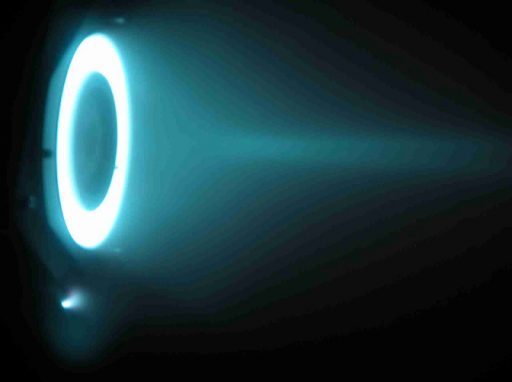
Previous iterations of E3000 used electric propulsion for stationkeeping, accumulating over 25,000 hours of operational time on satellites operated by Intelsat, Eutelsat, Inmarsat and YahSat.
The PPS5000 is a Hall Effect Thruster designed to operate between 2 and 5 Kilowatts of power with work currently underway to increase the operational power to 8kW. Initial development of PPS5000 was completed in 2003-04 taking an earlier lower-performance 1.5kW system as a basis. Development was put on hold until 2013 when the need for a higher-performance system arose due to the emerging trend of all-electric designs for 3 to 6-metric ton satellites.
The principal elements of the PPS5000 system are the Power Processing Unit, the Xenon Flow Controller and the Thruster Unit which comprises an Anode and Cathode subassembly.
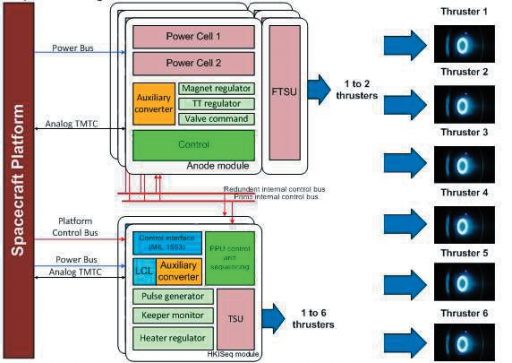
The Power Processing Unit interfaces with the power and data bus of the satellite platform and is in charge of delivering the necessary voltages to the thruster unit for thruster startup and thruster operational domain according to the specific phase of the mission. The PPU can deliver 1.5 to 20 kW of power, capable of driving four thrusters at the same time, and it allows the Hall Effect Thrusters to be operated in different domains with voltages between 300 and 400 V (optimizing thrust vs. impulse).
The PPU comprises three anode modules and a pair of sequencer modules. The sequencer module is in charge of all propulsion functions such as the cathode power supplies for heaters, keepers and igniters, sequencing of the entire PPU and generating feedback telemetry. All other functions like generating the 5kW anode supply, magnet regulation and Xenon flow control reside on the Anode modules, each of which can serve up to two thrusters.
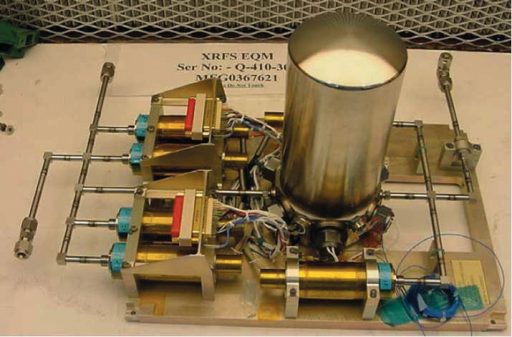
The Anode Modules each hold a pair of power cells to condition the anode power supply, auxiliary converters, magnet regulators, valve command, control modules and Filter/Thruster Switching Units that filter and switch and anode power supplies towards two thrusters. The HKISeq modules have 1553 data interfaces, PPU control & sequencing modules, pulse generators, keeper monitors, heater regulators and Thruster Switching Units generating the cathode bias. The two different controllers are interconnected via a CAN bus.
The Xenon Pressure Regulator and Feed System is responsible for providing Xenon gas flow to the thruster units at their operational working pressure. It comprises a series of valves, a plenum volume acting as buffer for pressure ripples, pressure sensors and flow regulators. Work is underway to fit the PPS5000 system with cryogenic Xenon storage which could double the Xe load in existing 100-liter tanks (130kg to 260kg), also enabling Krypton and Argon to be used as propellant.
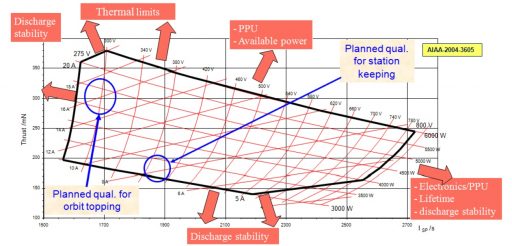
The PPS5000 thrusters have a broad operational range with a maximum thrust in excess of 350 millinewtons until reaching thermal limits and a maximal specific impulse of 2700 seconds when discharge stability and electronics lifetime become a problem. The thruster will be operated at 300 Volts (3kW) during orbit-raising, a setting optimized for a higher thrust level of 300 mN and lower impulse around 1700 seconds to accelerate the transfer sequence. In stationkeeping mode, the thruster will operate optimized for impulse and fuel efficiency at a voltage of 375V where thrust drops to 180 mN and impulse increases to 1850 seconds.
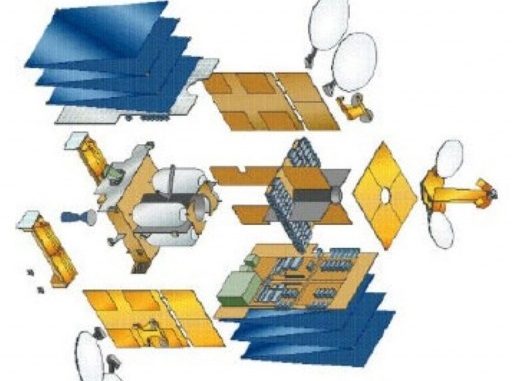
The E3000 satellite platform consists of a central cylinder which facilitates the propellant tanks and provides the structural backbone of the vehicle. The cylinder consists of several segments connected via ring-joints. Internal composite panels are mounted to the cylinder to facilitate the external panels and provide mounting platforms for the various satellite components.
Two deployable solar arrays are used for power generation featuring triple-junction Gallium-Arsenide solar cells for a nominal power generation of 13 Kilowatts. Power is stored in onboard batteries while a Power Conditioning and Distribution Unit regulates the satellite’s power bus and controls the state of charge of the batteries.
The satellite provides precise Earth-pointing capabilities and stationkeeping accuracy is +/-0.05 degrees.
